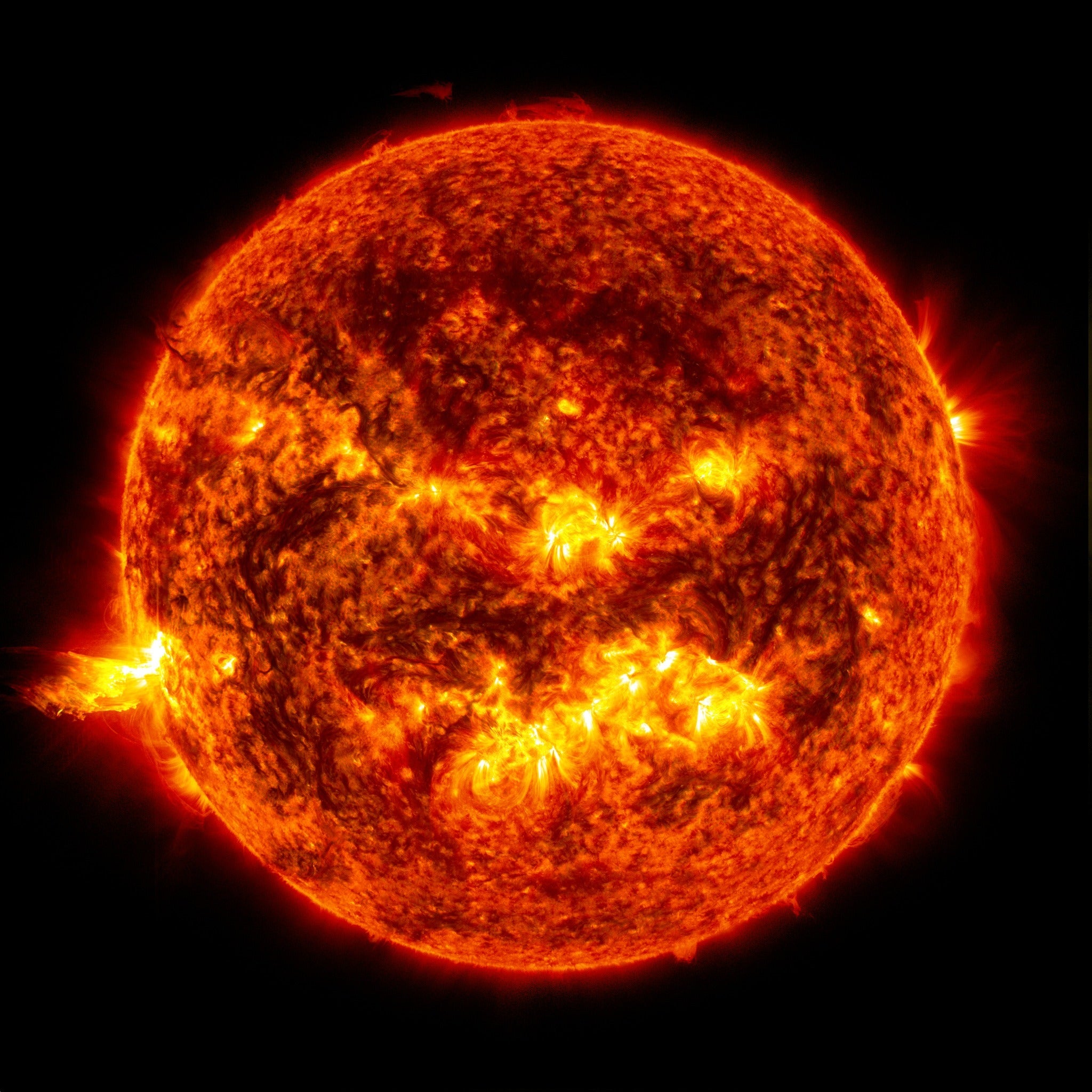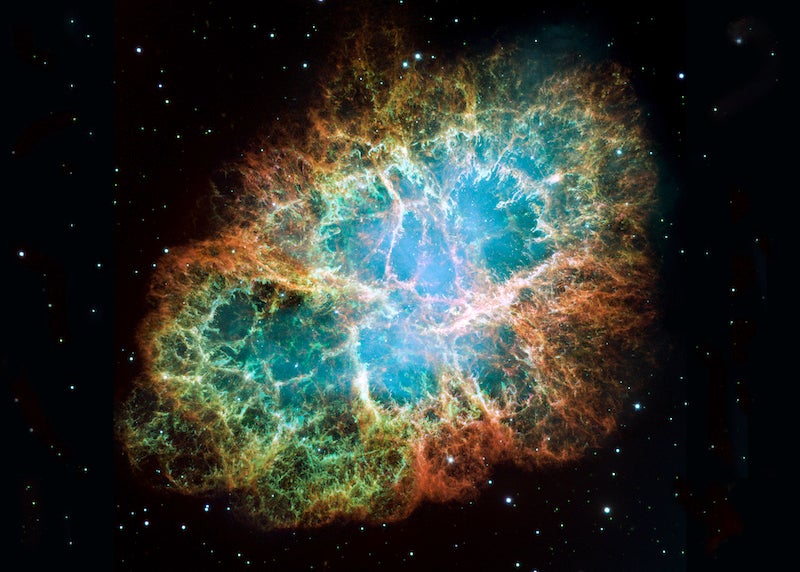Britain’s Beagle 2 spacecraft was to have announced its December 25, 2004, arrival on Mars with a musical flourish. Colin Pillinger, Beagle 2’s lead investigator, reasoned that the signal sent by the probe to indicate its successful landing could be anything — why not a piece of music? British rock band Blur composed the craft’s radio call sign, but Beagle 2 crashed, and the group never heard their tune beamed back from the Red Planet.
The twin Voyager spacecraft, both headed to the stars, are taking music along, too. The probes gave us the first close-up views of Jupiter, Saturn, Neptune, and Uranus in the 1970s and 1980s, and they’re now headed out of the solar system. Each carries a golden record containing 115 images of Earth, spoken greetings in 55 languages, a variety of natural sounds, and a 90-minute selection of music the word eclectic doesn’t begin to describe.
It includes the usual suspects — Bach, Beethoven, and Mozart — as well as Australian aboriginal songs, jazz from Louis Armstrong and Blind Willie Johnson, Stravinsky’s “Rite of Spring,” Chuck Berry’s “Johnny B. Goode,” panpipe tunes from the Solomon Islands and Peru, and more.
Symbols on the disk’s protective cover explain where the Voyagers came from and how to play the recordings. “The spacecraft will be encountered and the record played only if there are advanced space-faring civilizations in interstellar space,” observed Carl Sagan, a member of Voyager’s science team. “But the launching of this bottle into the cosmic ocean says something very hopeful about life on this planet.”
Yet humanity’s spread has already far outpaced the Voyagers. Frequency-modulated (FM) radio waves pass through Earth’s ionosphere and straight into space. As noted in Sagan’s 1985 novel Contact and the 1997 movie based on it, our planet has been sending radio and television signals into space for much of the last century. This expanding sphere already encompasses some of the sky’s brightest stars — Vega, Capella, and Arcturus. But even more importantly, it includes 51 Pegasi, 55 Cancri, and Mu Arae — all stars known to harbor planets.
This bubble of radio noise is Earth’s stream of consciousness, a running composition constructed from the stories, images, and songs we share with one another. Individual signals intertwine, merging into a unified radio whisper that calls across the galaxy.
We are the music of the spheres.
Huygens recorded audio data as it descended through Titan’s atmosphere January 14, 2005, with its Huygens Atmospheric Structure Instrument (HASI), which included an acoustic sensor. In the recording Huygens_descent_sound.mp3, ESA scientists have combined several sound samples taken at different times during the descent into a realistic reproduction of what a traveller on Huygens would have heard during one minute of the craft’s journey.
Huygens’ radar system received echoes from Titan’s surface in the last few kilometers of its flight. ESA scientists converted these radar pings into audible sound. As the probe approaches the ground, both the pitch and intensity increase.
Sound files courtesy ESA
Scientists from the University of California, Berkeley, the Jet Propulsion Laboratory, NASA’s Goddard Space Flight Center, and the University of Arizona in Tucson out outfitted a pickup truck instrumentation to study the atmospheric, electrical, and acoustic properties of dust devils. The tests took place in Eloy, Arizona, June 5&endash;7, 2001.
At one point, the truck became stuck in the sand and was a dust devil ran over. Here’s what it sounded like. For more information see The Planetary Society’s Mars Microphone page on the Dust devil field tests.
Sound file courtesy The Planetary Society
The great solar flares of 2003 were some of the largest ever recorded. NASA’a Cassini spacecraft detected a Type III radio burst about 69 minutes after the October 28, 2003, flare blasted from the Sun. For more detail, see Don Gurnett’s web page on the event.
Sound file courtesy Don Gurnett
Radio waves arrive from pulsars each time the object’s spin causes a beam of radiation to sweep across our line of sight. Here is what some of the sky’s brightest pulsars sound like when radio ticks are converted to audio.
The Crab pulsar lies at the center of the Crab Nebula, which is the remnant of a supernova seen on Earth in a.d.1054. It spins about 30 times a second.
The Vela pulsar formed in the same supernova that created the Vela remnant some 10,000 years ago. It spins about 11 times a second.
PSR J0437–4715 is a “millisecond pulsar.” It’s an old pulsar that has accreted matter from a normal stellar companion that expanded as it evolved into a red giant. The accretion process has spun this pulsar up to the incredible rotation rate of 174 times per second.
For more information, see The Sounds of Pulsars web page at the Jodrell Bank Observatory.
Sound files courtesy Jodrell Bank Observatory
Saturn is a source of intense radio emissions. NASA’s Cassini spacecraft began detecting these emissions in April 2002, when Cassini was 232 million miles (374 million kilometers) from the planet. The radio waves are related to the aurorae that form near the planet’s poles. Scientists sped up the recording 22 times, so the 73-second sound file represents 27 minutes of real time. They also shifted the frequencies downward by a factor of 44 because the actual emissions occur well above the audio range.
For more information, see The Eerie Sounds of Saturn’s Radio Emissions.
Sound file courtesy of Bill Kurth and Don Gurnett
The termination shock is where the solar wind, a thin stream of electrically charged gas blowing continuously outward from the Sun, is slowed by pressure from gas between the stars. At the termination shock, the solar wind slows abruptly from its average speed of 700,000 to 1.5 million miles per hour (300 to 700 km per second) and becomes denser and hotter.
NASA’s Voyager 1 spacecraft, launched in 1977, finally passed the shock December 16, 2004. Late on the previous day, the spacecraft’s instruments detected these signals coming from the shock. The sound file compresses 4 hours of data into 6 seconds. For more information, see Voyager Termination Shock on Don Gurnett’s Space Audio web site.
Sound file courtesy Don Gurnett









